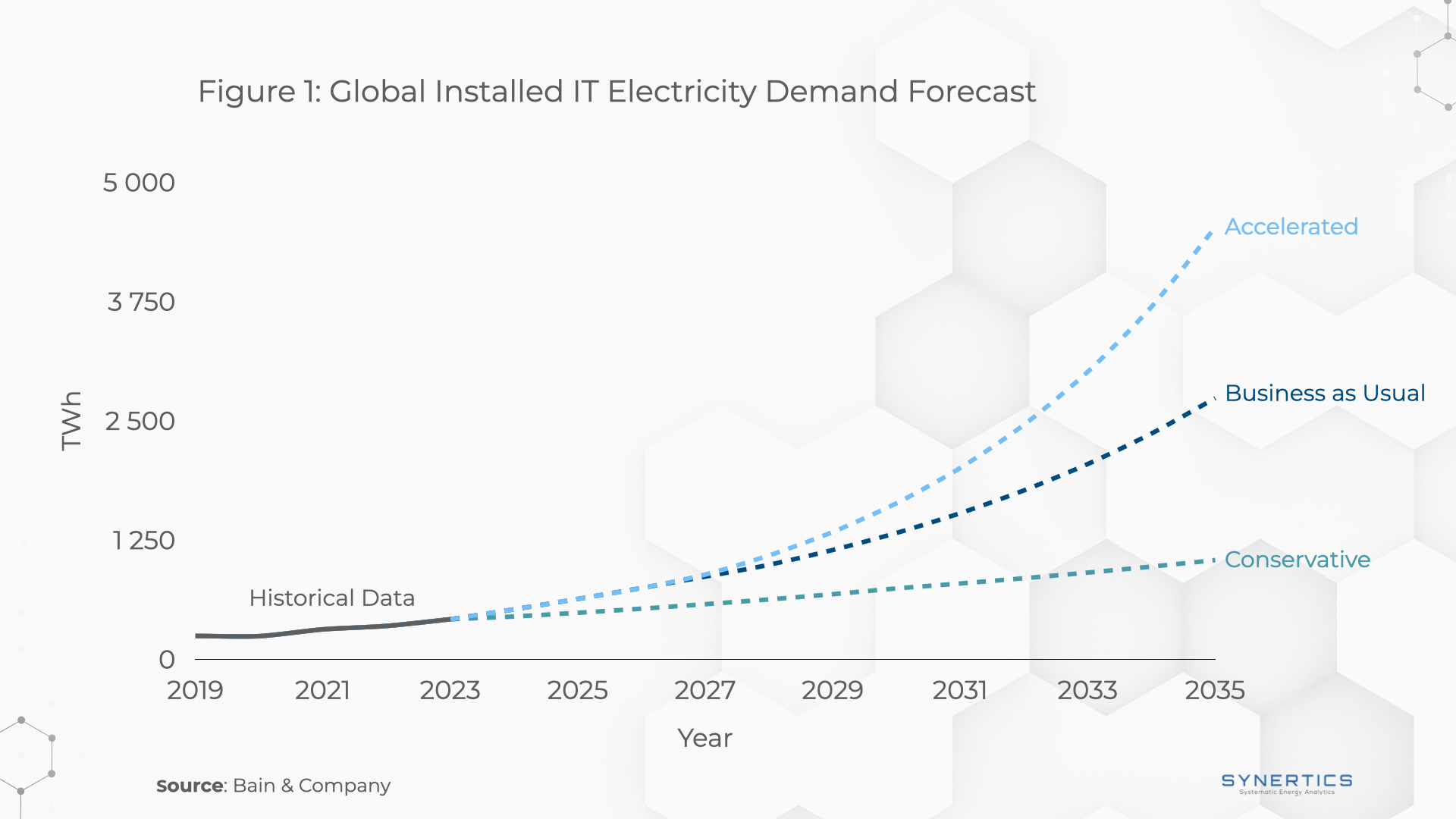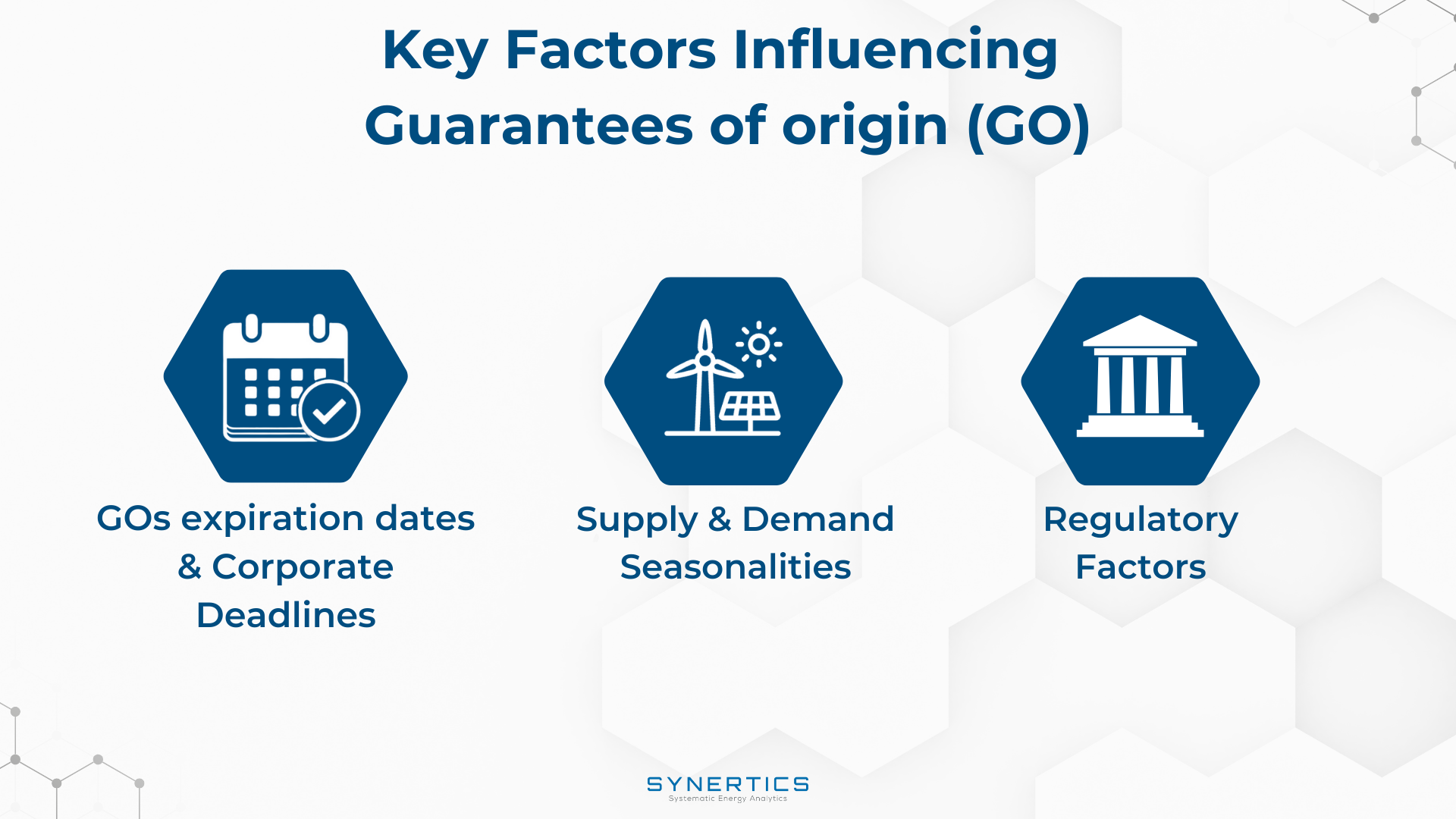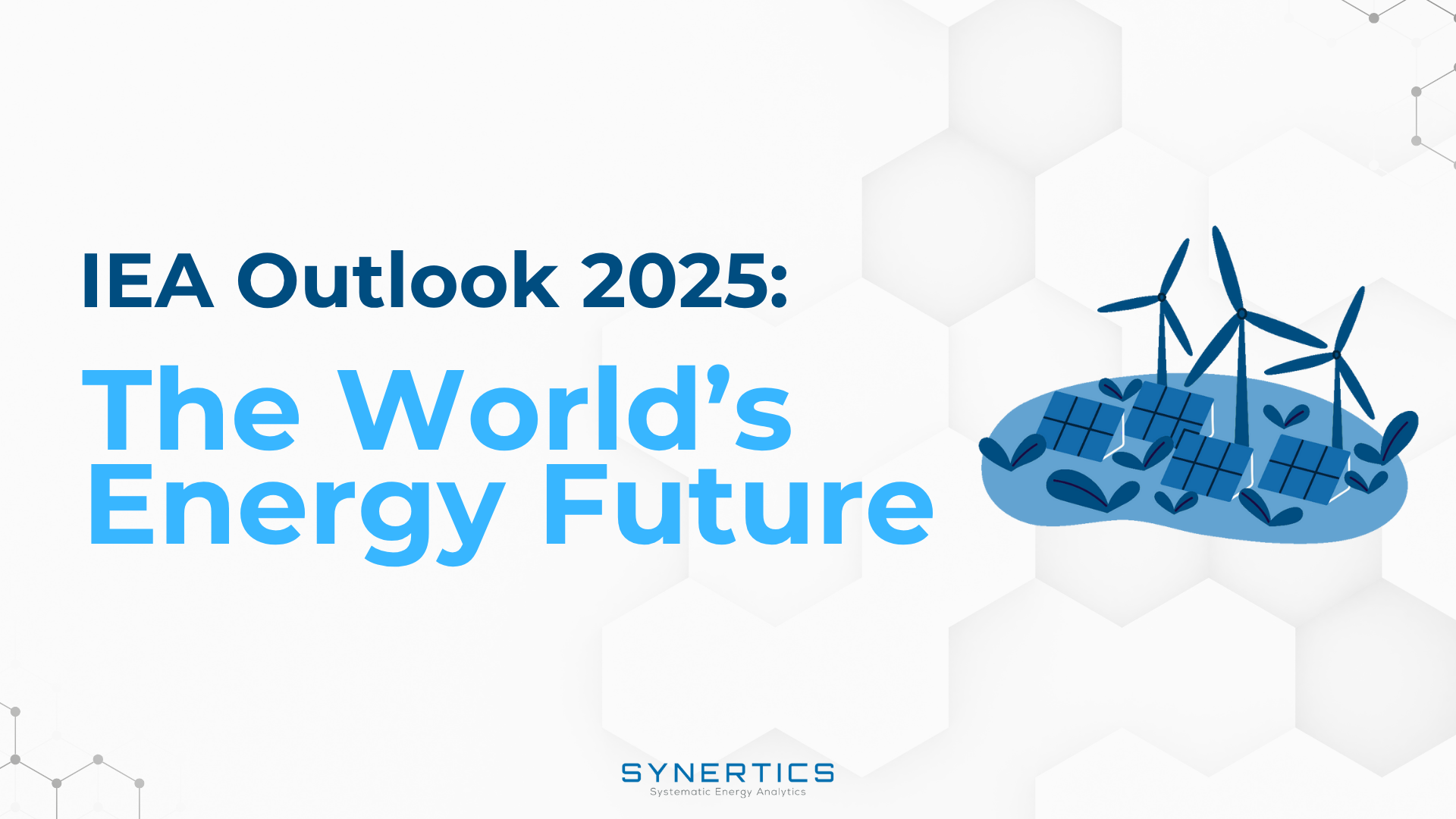Join us on our journey towards renewable energy excellence, where knowledge meets innovation.
Over the last years, data centres have been gaining ground in the electricity demand share, mostly due to the rising demand for IT services such as cloud computing, AI and big data analytics. In the coming years, the demand for electricity will continue to rise to support the expansion of the digital revolution. Power Purchase Agreements (PPAs) can contribute to the sustainable growth of the industry while simultaneously mitigating exposure to volatile electricity markets.
In 2024, the IT industry solidified its position as the leading sector for PPAs, signing a record-breaking 3,5 GW in volume.
In this article, we explore the trends in electricity consumption for IT industries, particularly data centres, the challenges posed to data centre owners, and how PPAs can mitigate those risks while sustaining the growth and energy sourcing required to power this technological evolution.

The Future of Data Centres
To store, manage, and process vast amounts of digital data, data centres are essential. These infrastructures support applications for cloud computing, AI, and big data analytics, activities that grow in demand each day. Housing thousands of servers, each equipped with powerful processors, data centres require enormous amounts of electricity, as they consume significant energy for both computational processing and system cooling.
With the abrupt rise of AI, energy consumption per server rack has doubled in the last 2 years. The most recent processors, combined with the server, can now reach up to 120 kWh energy consumption per rack. This exponential increase in power demand is not only driven by more powerful processors but also by the growing reliance on IT services such as AI and big data analytics. As these technologies continue to evolve, data centres are expected to consume an even larger share of global electricity, raising concerns about sustainability and the need for energy-efficient solutions.
Between 2010 and 2020, despite the rapid expansion of installed servers, electricity demand for data centres remained relatively stable. This was largely due to advancements in cooling efficiency and workload optimisation, which helped offset the increased demand. However, these efficiency improvements are now struggling to keep pace with the growing need for data centre services.
The rise of AI has increased the gap between computing demand and the efficiency gains required to mitigate rising energy consumption as AI-driven workloads require significantly more power.
However, this ongoing transformation creates substantial uncertainty regarding the actual energy requirements for data centres in the coming years. If AI is currently requesting more power to process its large language models, it remains uncertain how long it will take for technological development to catch up with more efficient energy-saving technologies or more optimised algorithms. Figure 1 illustrates potential evolution scenarios based on recent reports analysing expected energy consumption trends for data centres.

Despite initial predictions, January 2025 brought two major developments that could significantly impact the global expansion rate of data centres. On one hand, President Trump’s executive order to invest $500 billion in AI development is expected to accelerate the adoption of the technology, fueling rapid industry growth and driving up energy demand. On the other hand, the emergence of the Chinese AI model Deepseek, which claims to perform the same tasks as its American competitors using just 1/40th of the computing power, has challenged the dogmatic assumption that AI inherently requires massive computational resources.
These contrasting events introduce considerable uncertainty into current energy consumption forecasts for data centres, as they could either amplify or mitigate future demand. Nevertheless, with the ongoing digital transformation, the expansion of data centre infrastructure and power consumption remains inevitable, reinforcing the urgent need for sustainable strategies to support their growth.
Data centres face significant challenges, especially regarding their impact on electricity grids. Their location choices are constrained by several factors, including proximity to critical infrastructure such as fiber optic cables and power sources, accessibility to customers requiring real-time data access, and favourable climate conditions to reduce cooling costs.
These requirements significantly limit suitable locations for data centres. Additionally, since electricity is the primary operational cost for data centres, access to affordable energy is essential. In this context, renewable energy PPAs offer a compelling solution for data centers, providing cost-effective and sustainable energy while also supporting grid stability and decarbonisation efforts.
PPAs play a vital role in strengthening the sustainability and energy security of data centres. By entering into long-term agreements with renewable energy providers, data centres can meet their sustainability goals and reduce energy costs.
PPAs offer a predictable and often lower electricity price, shielding data centres from market volatility. In the case of physical PPAs with on-site solar renewable energy installations, data centres can access local solar energy production without upfront capital investment, as third-party providers manage installation, operation, and maintenance. They ensure a dedicated power supply, reducing dependence on grid electricity and mitigating grid connection constraints.
As data centres expand to meet increasing digital demands, PPAs serve as a strategic tool to enhance both environmental sustainability and cost-saving operations.
The rise of cloud services and AI technologies demand has heightened expectations for data centre growth. The infrastructure needed to store, manage, and process data and AI algorithms will become even more essential, driving the need for more powerful data centres with higher electricity consumption. Despite uncertainties about how quickly technology will evolve to improve energy efficiency, digitalization will continue to push the IT sector’s energy demands upward.
Data centre owners face risks related to grid access, electricity market volatility, and high energy costs, as electricity constitutes the majority of operational expenses PPAs offer a strategic solution, shielding companies from price fluctuations, securing lower energy costs, and advancing sustainability goals. Additionally, onsite energy generation can further mitigate grid access challenges. Meanwhile, electricity producers benefit from PPAs as a stable financing mechanism for new projects.
In conclusion, PPAs play a crucial role in the sustainable growth of IT infrastructure. This mutually beneficial model has been reinforced by the IT sector's track record as the leading adopter of PPAs.
Want to know more about how a PPA can benefit a data centre? Contact us today to learn more about securing affordable, renewable energy for your operations.

Insights, Market-trends
15th Dec, 2025

Insights
2nd Dec, 2025

Insights
19th Nov, 2025